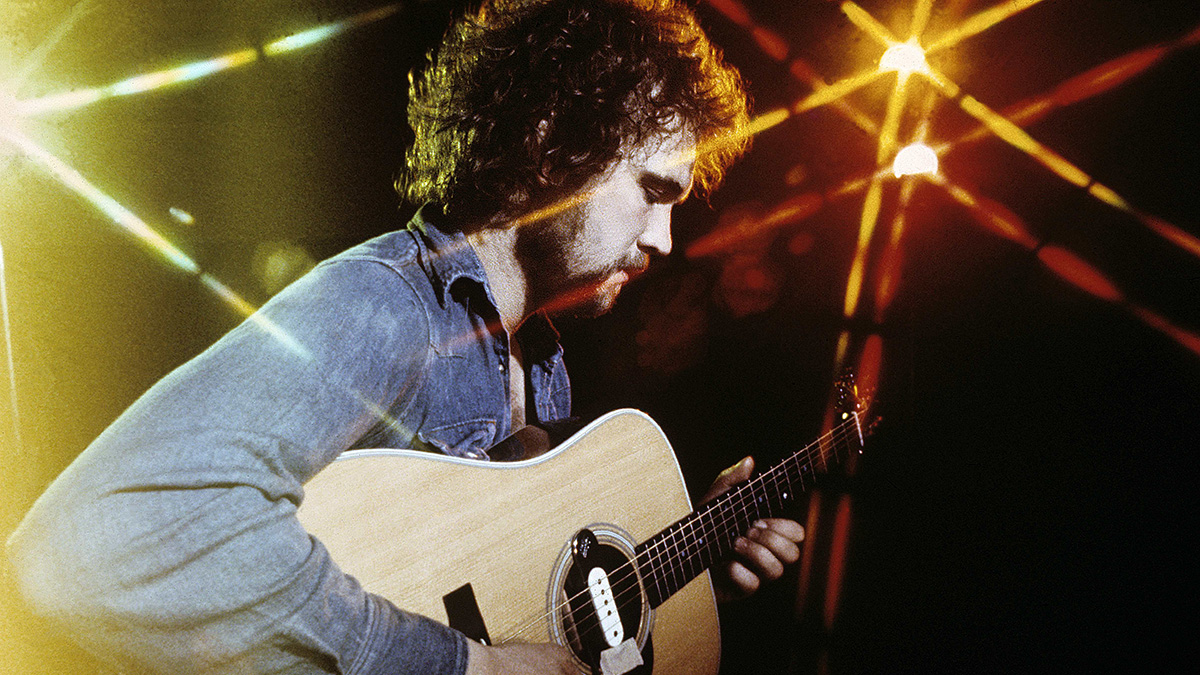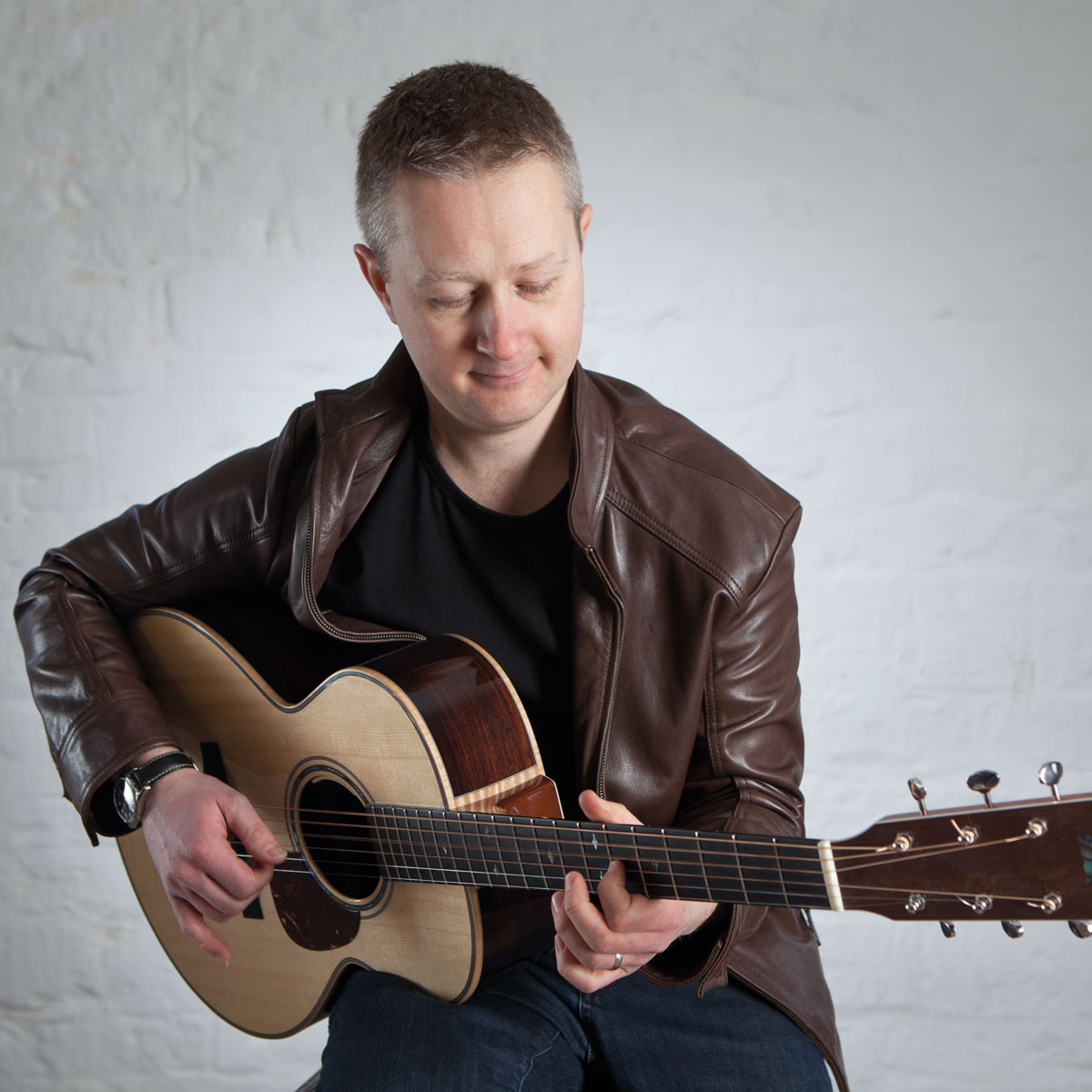Master the guitar style of 8 folk-rock legends, from John Martyn to Jimmy Page
This lesson takes a deep dive into the '60s and '70s music that blurred the line between the acoustic and electric and spoke to a rich British folk heritage

The British folk scene of the 1960s and 70s is sometimes maligned, but dig in and you’ll find some of the most creative and awe-inspiring guitar playing of those decades. For sure the musicianship and guitar abilities uncover hard-hitting riffs, odd-time signatures, ornate single-line playing, altered tunings and deft fingerpicking.
In this feature we’ll explore the styles of the folk masters, each of whom had their own distinctive approach to the instrument. There’s the consummate folk master Martin Carthy who was intimately connected to the British folk heritage of centuries gone by – a heritage he updated through his work with Steeleye Span.
Acoustic guitar masters John Renbourn and Bert Jansch teamed up in Pentangle to fuse their blues, jazz, folk and renaissance influences to create a fascinating melting pot of styles.
Folk legend Richard Thompson shaped the sound of folk-rock pioneers Fairport Convention prior to finding success as a solo artist. John Martyn created a folk-rock fusion through his combination of blues, jazz and traditional folk playing, all modernised through his use of the Echoplex delay and altered tunings.
Martin Barre brought a heavier, bluesy sound to folk-rock through his playing with Jethro Tull and is still an influence today – check out Joe Bonamassa’s cover of Tull’s A New Day Yesterday, for example.
Then there’s altered tuning master Nick Drake whose songwriting has extraordinary depth and still sounds contemporary now. And finally, Jimmy Page needs no introduction but listen carefully to his acoustic playing with Led Zeppelin and you will hear a masterclass in folk guitar playing with Jimmy’s ever-present Bert Jansch and Davey Graham influence.
Folk-rock can be a challenging style owing to all the different styles and approaches inherent to the music, so in this feature you’ll find odd time signatures, complex fingerpicking, big riffs and more! Remember, many of these players were equally adept on both acoustic and electric guitar so you’ll find examples for both instruments in what follows.
Technique Focus: Odd-time signatures
As its name suggests, folk-rock can encompass techniques from both camps and often features challenging examples of those techniques. From fingerpicking to lead licks, altered tunings to odd-time signatures, there is much to get to grips with. Odd-time signatures are a useful thing to focus on within the folk-rock idiom.
They can seem daunting, but remember that time signatures like 5/4 and 7/4 are easily broken down into groups of two and three beats – all you have to do is work on where the emphases lie so you can decide where those groups of two and three beats fall in a bar.
Get the tone
The folk-rock pioneers used a variety of electric tones from clean to heavy, so it was Fender, Marshall and Vox amps, Strat, Tele and Gibson Les Paul guitars, with effects like phasers, uni-vibes and delays also appearing.
Acoustics were mostly Martin, Gibson or Guild. Use the above as your clean electric settings and add drive, flanger, delay and Univibe effects where appropriate.
Example 1. Richard Thompson
Today, you’ll often see Richard Thompson performing deft fingerpicking solo on his Lowden acoustic but in Fairport Convention his electric guitar would often play riff-based parts and intertwine with violinist Dave Swarbrick’s lines.
Shifting time signatures are a big part of folk-rock (as they are in prog) so this example will need some concentration to ensure you don’t lose your place – count the bars all the way through so you can get a sense of where the beats fall.
Example 2. Martin Barre
A virtuoso lead player, Martin Barre started out listening to Jazz guitarists Barney Kessel, Wes Montgomery and Johnny Smith and started his professional career accompanying well-known visiting soul artists.
His eclectic style is a fusion of various influences from traditional English folk to hard rock. This example examines the heavier, blues-rock side of his playing in 12/8 and to a casual listener it can be surprising to hear how heavy Jethro Tull could get!
Example 3. Martin McCarthy – Arpeggios
Like Richard Thompson, Martin Carthy is an artist who was a pioneer in the burgeoning folk-rock scene and then went on to have a successful career as a predominantly acoustic singer and fingerpicker within the folk idiom.
His work with Steeleye Span features him in a rather brief electric guitar period but it’s well worth checking out this era to hear how he brought folk influenced chords like those featured here into the nascent folk-rock canon.
Example 4. Martin McCarthy – Chord Outlining
Example 5. John Renbourn
As with the other artists featured here, John Renbourn’s interests went beyond folk to include classical, jazz and blues among other genres. This example showcases the classical side of his playing with plenty of ornamentation and solid fingerpicking.
Remember that he and Bert Jansch created interlocking guitar parts during their time in Pentangle and subsequently as a duo, and Renbourn really was a virtuoso innovator within the folk-rock idiom.
Example 6. Bert Jansch
Scottish fingerpicker Bert Jansch had a huge influence on many musicians from the folk world and beyond – including players like Jimmy Page and Blur’s Graham Coxon. His influences were comparatively narrow – Big Bill Broonzy, Davey Graham and Folk singer Archie Fisher.
His interplay with Renbourn in Pentangle is a fascinating sound often referred to as ‘folk-baroque’. Try this part with the John Renbourn style piece to get a sense of how this intricacy works.
Example 7. John Martyn
Another altered tuning master, John Martyn had a heavy, percussive approach to his acoustic guitar playing which, like Nick Drake’s, was full of colourful sounding chords that you can’t find in standard tuning.
This example uses DADGAD tuning and is a good example of how you can get lots of colour from doing comparatively little. Focus on the groove here and listen to John Martyn himself to hear a rhythmic master at work.
Example 8. Nick Drake
A master singer-songwriter, Nick Drake worked almost exclusively in altered tunings, some rather outlandish like BEBEBE. I’ve stayed in standard tuning here but explore his use of rich, coloured chords like the add9 and his innovative use of odd-time, especially 5/4 as used here.
It’s best to think of each bar as a ‘three beat’ followed by a ‘two beat’ sequence, as splitting things up like that removes some of the unnatural feeling if you’re not used to unusual time signatures.
Example 9. Jimmy Page
Jimmy Page’s love of Bert Jansch and Davey Graham is well-acknowledged but it goes almost without saying that he was innovative and influential too. Beyond his bone-crushing electric guitar riffs he had a tremendous approach to acoustic guitar with clean fingerpicking and altered tunings being at the heart of his playing.
He cleverly lets the tuning do a lot of the work so you’ll frequently find ‘parallel shapes’ being put to good work, as you’ll see here.
Get The Pick Newsletter
All the latest guitar news, interviews, lessons, reviews, deals and more, direct to your inbox!
Stuart Ryan is best known for his acoustic guitar playing, from Celtic fingerpicking and traditional folk to modern percussive phrasing and fresh interpretations of popular pieces. He has released several solo albums, written pieces for UK examination boards and created nine tutorial books ranging from acoustic guitar arrangements to Americana styles.
“There are so many sounds to be discovered when you get away from using a pick”: Jared James Nichols shows you how to add “snap, crackle and pop” to your playing with banjo rolls and string snaps
Don't let chord inversions bamboozle you. It's simply the case of shuffling the notes around










![Joe Bonamassa [left] wears a deep blue suit and polka-dotted shirt and plays his green refin Strat; the late Irish blues legend Rory Gallagher [right] screams and inflicts some punishment on his heavily worn number one Stratocaster.](https://cdn.mos.cms.futurecdn.net/cw28h7UBcTVfTLs7p7eiLe.jpg)


